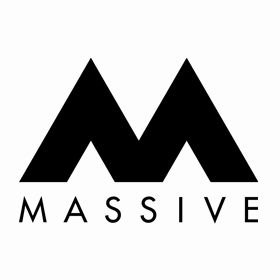
5 Automations to Implement Today to Take Advantage of Your HubSpot Subscription
HubSpot is a powerful tool that can enhance the marketing and sales of any business. With so many powerful features to choose from, HubSpot is sometimes grossly underused!
The first step to taking full advantage of what HubSpot has to offer is implementing some basic, yet effective, HubSpot marketing automation. Keep reading for a list of the most game-changing automation you should implement today to tap into the full potential of HubSpot.
HubSpot is a CRM platform that combines marketing, sales, customer service, operations, and website management in one place. The cloud-based software is designed to promote team alignment, boost operational efficiency, enhance growth marketing, and drive return on investment (ROI).
The first step in accomplishing all of that? Implement surefire automation that will help businesses of all sizes stay organized and optimized.
Don’t Skip Out On These HubSpot Marketing Automation
1. Lifecycle Stage Automation
Lifecycle stage automation is an essential tool for any marketing team. This automation assigns a stage (such as subscriber, lead, MQL, opportunity, customer, etc.) when certain criteria are met, allowing you to know where prospects and customers are on their journey so you can better serve them with targeted content and sales material.
For example, if a lead hasn’t yet moved into the marketing-qualified lead (MQL) stage, you can easily look into their specific journey, how much time they’ve spent in each stage, and more, and then automatically enroll them in a nurturing campaign specific to their stage.
2. Lead Scoring
One of HubSpot’s strongest features is its lead scoring , which can be used data can be used to automatically prioritize your outreach.
The premise of lead scoring is simple: based on certain criteria, contacts are assigned a numeric value; those with higher scores are considered further along in the buyer’s journey and are prioritized.
Different score values can exist for different actions that prospects take. Perhaps downloading an e-book from your website gives them 15 points and attending a product webinar gives them 25.
There are some standard best practices when it comes to scoring, but you can ultimately create score values based on what’s most important to you.
Then, you can create workflows that are triggered when a contact reaches a certain score. For example, a workflow trigger might be “contact reaches 50 lead scores point,” and then they automatically receive a nurturing email sequence that’s targeted toward that high score range.
3. Automated Welcome Series
A welcome series is a crucial part of new customer engagement. These are the first emails a customer will get after purchasing or signing up for your product, and it’s a great way to introduce your business and brand.
The welcome series email campaign should include:
- A warm and personal welcome message from you conveying the enthusiasm about their decision to purchase your service or product.
- An introduction to what they can expect from your business moving forward (e.g., “You’ll receive weekly tips on how to use our product more effectively, learn about industry news that affects us all, and see information about our upcoming events or webinars”).
- Links to social media platforms so your new customers can stay in touch and up to date.
- A strong offer/gift to show your customers that they matter and will receive exclusive offers.
This series should, of course, be marketing automation so that when a contact is newly marked as a customer, they immediately become enrolled in the workflow.
4. Lead Assignment Automation
Automatic assignment of leads to the right people is an important part of your marketing process. It helps ensure that you’re allocating your time efficiently, and it enables your team members to focus on their core strengths.
To automate lead assignment, simply set up a rule in HubSpot that automatically assigns new leads to the correct team member based on their profile information and other data from the lead record. This way, the right leads are assigned to the team member who can best foster the lead journey.
5. Reengagement Series for Closed Lost Opportunities
Re-engagement campaigns are a great way to reconnect with customers who have fallen off the radar. It can be frustrating to lose out on deals, but if engaged properly, closed lost opportunities can become interested in what you’re offering.
When it comes to re-engaging with customers, though, there are a few things to keep in mind.
Re-engagement campaigns aren’t a one size fits all solution—they’re designed for people who were very interested in what you had to offer but didn’t follow through for a variety of reasons (timing, budget, etc.)
After a proper amount of time passes (think a few months – you don’t want to try to reengage a few days after the deal is marked as closed lost!), closed lost opportunities should be automatically enrolled in a re-engagement series.
These emails should clearly convey why these folks should want to engage with your company again today. That means recognizing that they’ve engaged with you before and presenting new offers and new information that might help them reevaluate their decision.
Conclusion
HubSpot is a powerful tool that can automate important tasks and provide you with useful data on what your contacts are up to.
These 5 marketing automations are a great way to get Hubspot working for you the way it’s meant to.
The automation tools available within HubSpot give you the ability to take your marketing and sales efforts to the next level, but they still require careful planning and execution.
If you’re looking for some inspiration on how to get started with automated workflows in Hubspot check out a HubSpot marketing agency like ProperExpression!























